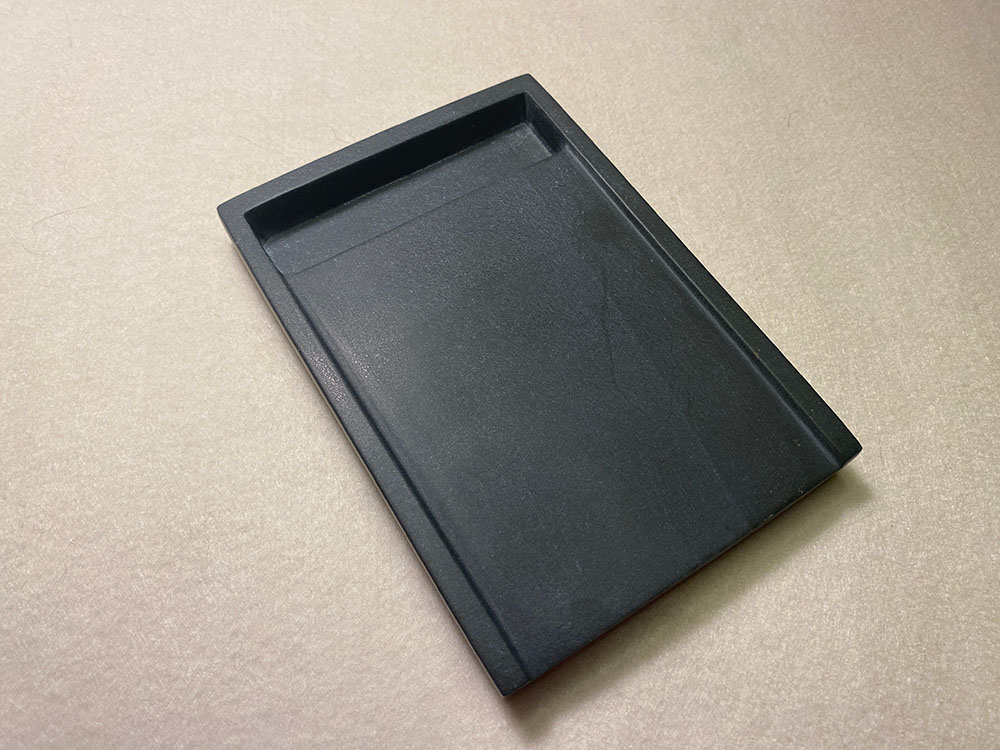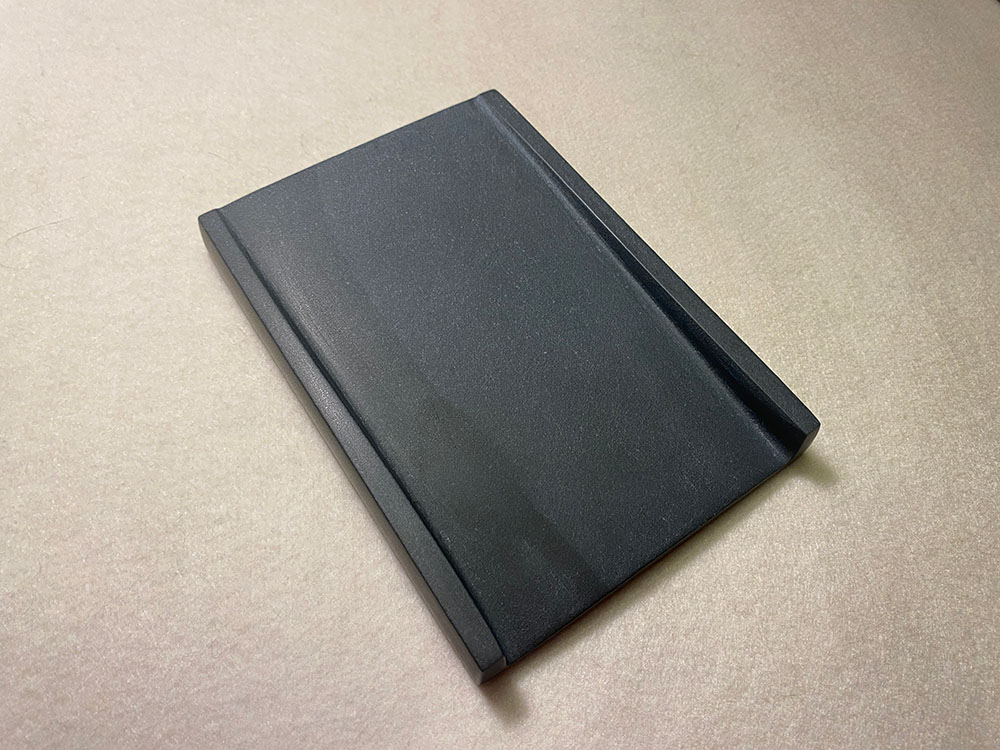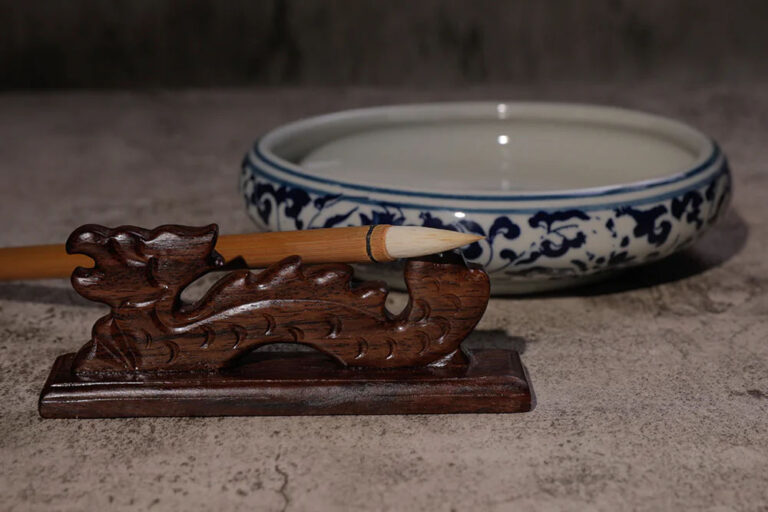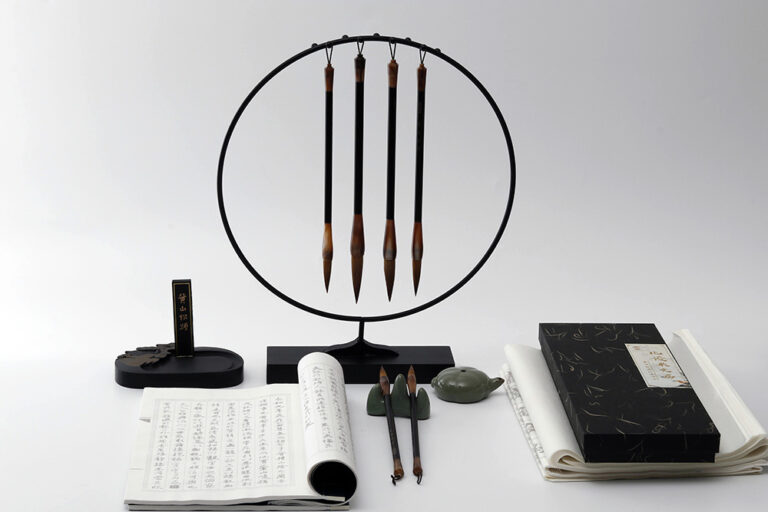Written with love, shared with joy.
Exploring the Southern Song Dynasty Copyist Inkstone

Recently, I acquired an exquisite Southern Song-style copyist inkstone(抄手砚). In this blog, I’ll share its fascinating history, intricate craftsmanship, and practical features, offering insights into why this piece is a treasure for collectors and scholars alike.
The Southern Song Dynasty (1127–1279) is a period celebrated for its artistic refinement and cultural advancements. Among its many contributions to Chinese arts and crafts, the copyist inkstone holds a significant place. This unique tool, used by scholars and artists of the era, is not just an instrument for writing but a symbol of artistic ingenuity, practicality, and cultural heritage.
You can also read more about inkstone from the Four Treasures of the Study in this article before continuing reading.
The Historical Context of the Copyist Inkstone
The Southern Song Dynasty emerged after the fall of the Northern Song, when the imperial court retreated to the southern city of Hangzhou. Despite political instability, this era became synonymous with cultural flourishing. Scholars, poets, and artists of the time were deeply committed to preserving traditions while embracing innovation.
Writing and calligraphy were central to Southern Song intellectual life, and the tools associated with these arts—brushes, ink, paper, and inkstones—were meticulously crafted. The copyist’s inkstone, designed to cater to the needs of meticulous scribes, is a perfect embodiment of this ethos.
What Makes the Copyist Inkstone Unique?

The term “copyist’s inkstone” refers to its primary users—copyists and scholars who spent countless hours reproducing texts or creating calligraphic works. These inkstones were specifically designed to support precision and efficiency in writing, with unique features that distinguished them from ordinary inkstones.
- Compact and Ergonomic Design
- Unlike larger, decorative inkstones, the copyist’s inkstone is compact, making it easy to transport. Its size also reflects the practical needs of copyists who often moved between locations.
- Its ergonomic design includes gently sloped surfaces and a slightly curved well, facilitating the smooth grinding of ink sticks and the easy collection of ink.
- Fine Material
- The Southern Song Dynasty was renowned for the use of high-quality stones sourced from regions like Duanxi(端溪)and Huizhou(徽州). These materials were prized for their fine grain, durability, and ability to preserve ink’s natural consistency.
- My inkstone is crafted from Huizhou stone, known for its delicate texture and subtle greenish hue, which adds an aesthetic dimension to its functional excellence.
- Artistic Detailing
- Though primarily utilitarian, many copyist’s inkstones are adorned with minimalist carvings. These decorations often include auspicious motifs like clouds, cranes, or bamboo, symbolizing scholarly aspirations and longevity.
- The inkstone I acquired features a discreet bamboo engraving, a nod to the Southern Song’s love for nature-inspired themes.
The Craftsmanship Behind it
Creating a high-quality inkstone is an art that requires exceptional skill. During the Southern Song Dynasty, inkstone artisans developed advanced techniques to enhance both functionality and aesthetic appeal.
- Stone Selection
- Artisans carefully selected stones for their smooth texture, lack of impurities, and ability to produce ink evenly. The quality of the material directly influenced the inkstone’s performance and longevity.
- Carving and Polishing
- The surface of the inkstone was meticulously polished to ensure a perfectly smooth grinding area. This process was critical for maintaining the integrity of ink sticks and achieving a consistent ink texture.
- The inkstone’s edges and base were shaped to provide a comfortable grip, while decorative carvings were added to enhance its visual appeal.
- Functional Features
- The inkstone’s design often included a shallow well for holding water and a gently sloping grinding area to prevent spillage. These thoughtful details highlight the practical needs of Southern Song scholars.
My Experience
Using this inkstone is a deeply satisfying experience. The smooth grinding surface allows ink sticks to release their pigment effortlessly, while the compact size makes it easy to handle. As someone who appreciates traditional calligraphy, I find it connects me to the artistry and scholarly pursuits of a bygone era.
Additionally, the inkstone’s historical significance inspires reflection on the cultural richness of the Southern Song Dynasty. Each stroke of the brush feels like a tribute to the legacy of scholars who valued precision, elegance, and intellectual rigor.
Preserving the Legacy of the Inkstone
Today, the copyist inkstone is cherished by collectors, calligraphy enthusiasts, and historians. It serves as a tangible link to the past, embodying the sophistication and ingenuity of the Southern Song Dynasty.
For those interested in acquiring such a piece, here are a few tips:
- Research the Source: Ensure the inkstone comes from a reputable dealer or auction house. Genuine Southern Song-style inkstones are rare and often accompanied by documentation.
- Inspect the Material: Look for fine-grained stone with a smooth surface and natural coloration.
- Appreciate the Craftsmanship: Pay attention to the design, carvings, and overall finish of the inkstone.
Conclusion
The Southern Song copyist inkstone is more than a tool—it’s a testament to the artistry and intellectual pursuits of one of China’s most culturally vibrant periods. Owning such a piece is a privilege that brings history to life, offering a glimpse into the daily practices of ancient scholars.
Whether you’re a calligraphy enthusiast or a collector of historical artifacts, the copyist’s inkstone is a remarkable addition to any collection. Its timeless beauty and functionality remind us of the enduring value of craftsmanship and cultural heritage.
As I continue to explore the world of inkstones, this Southern Song-style piece will remain a cherished companion, a bridge between the past and present.



